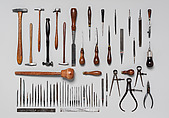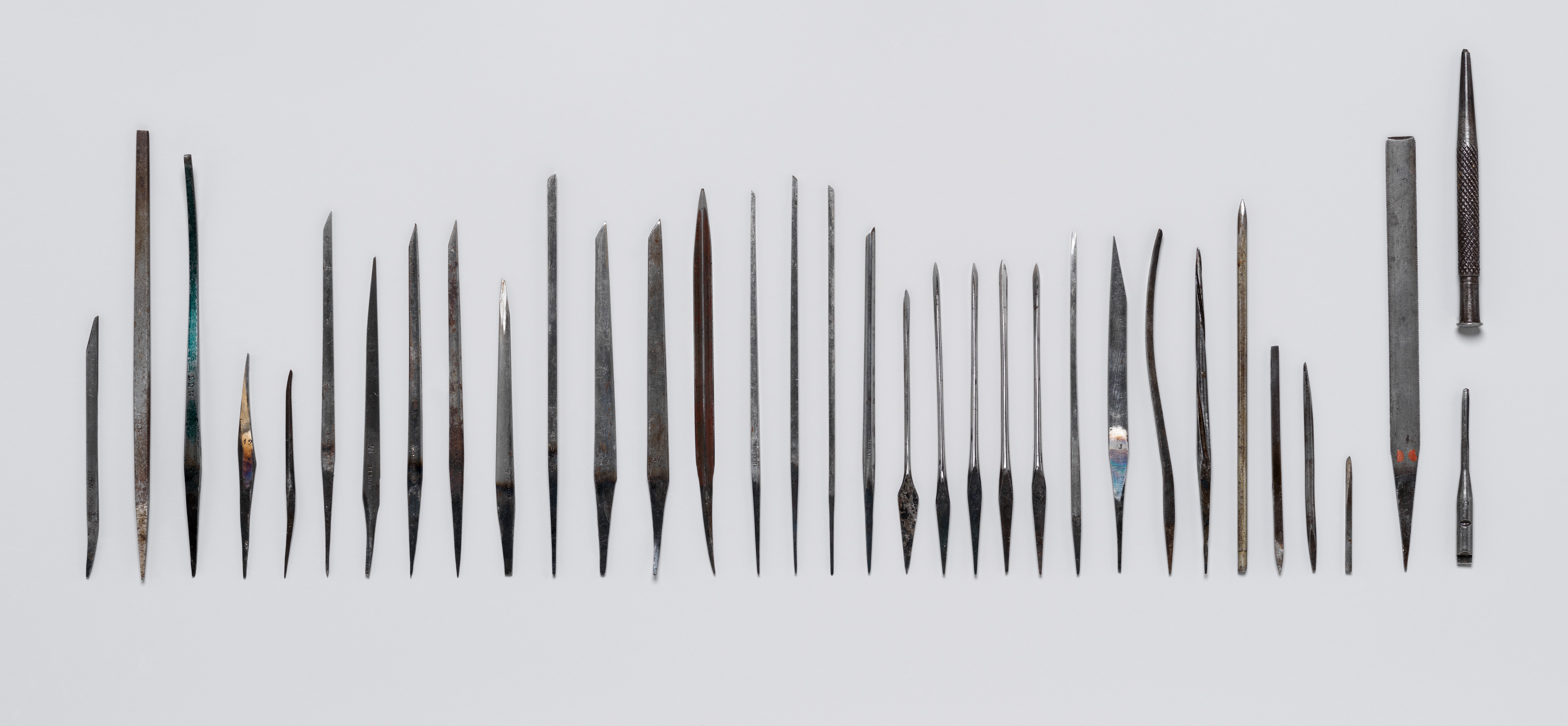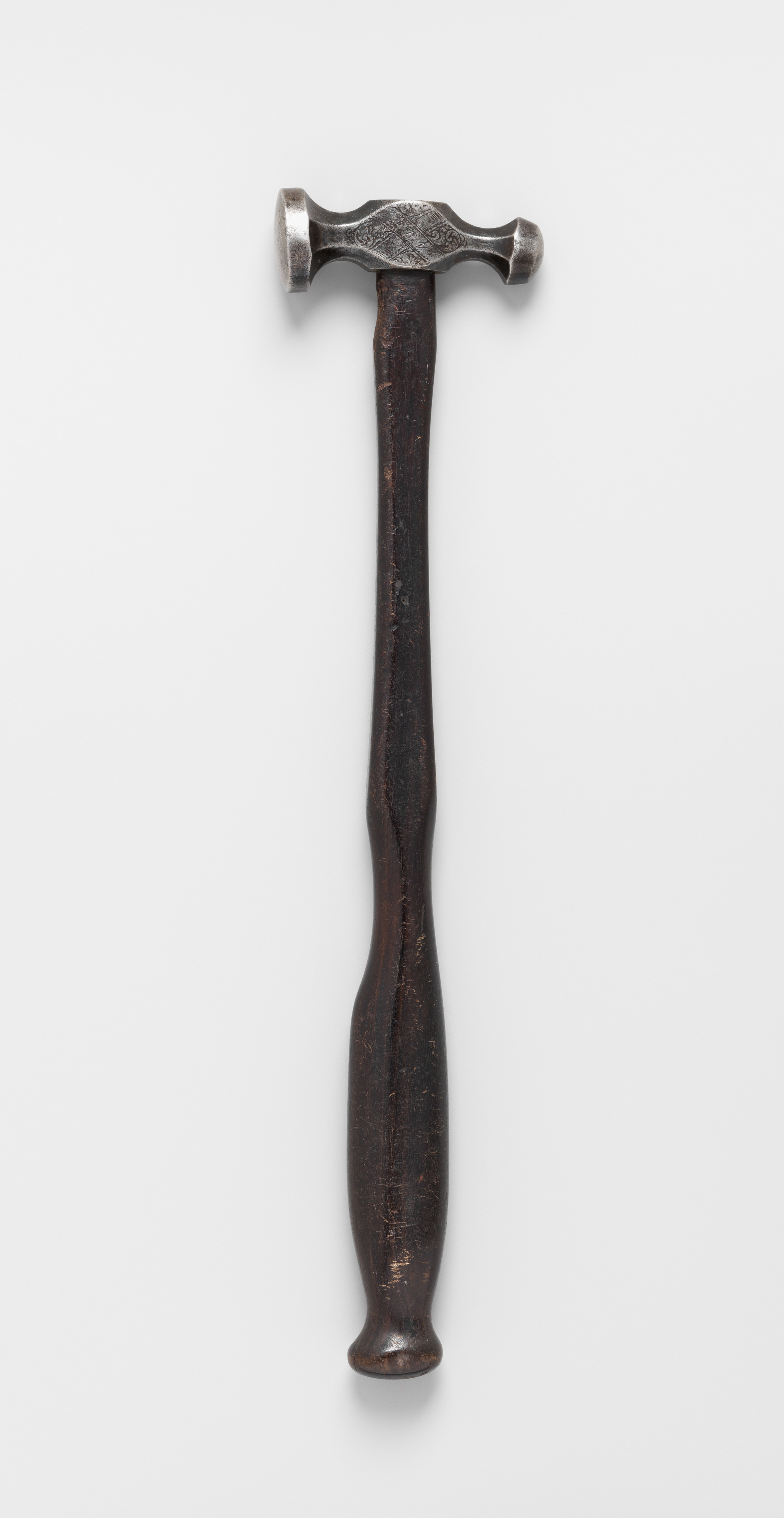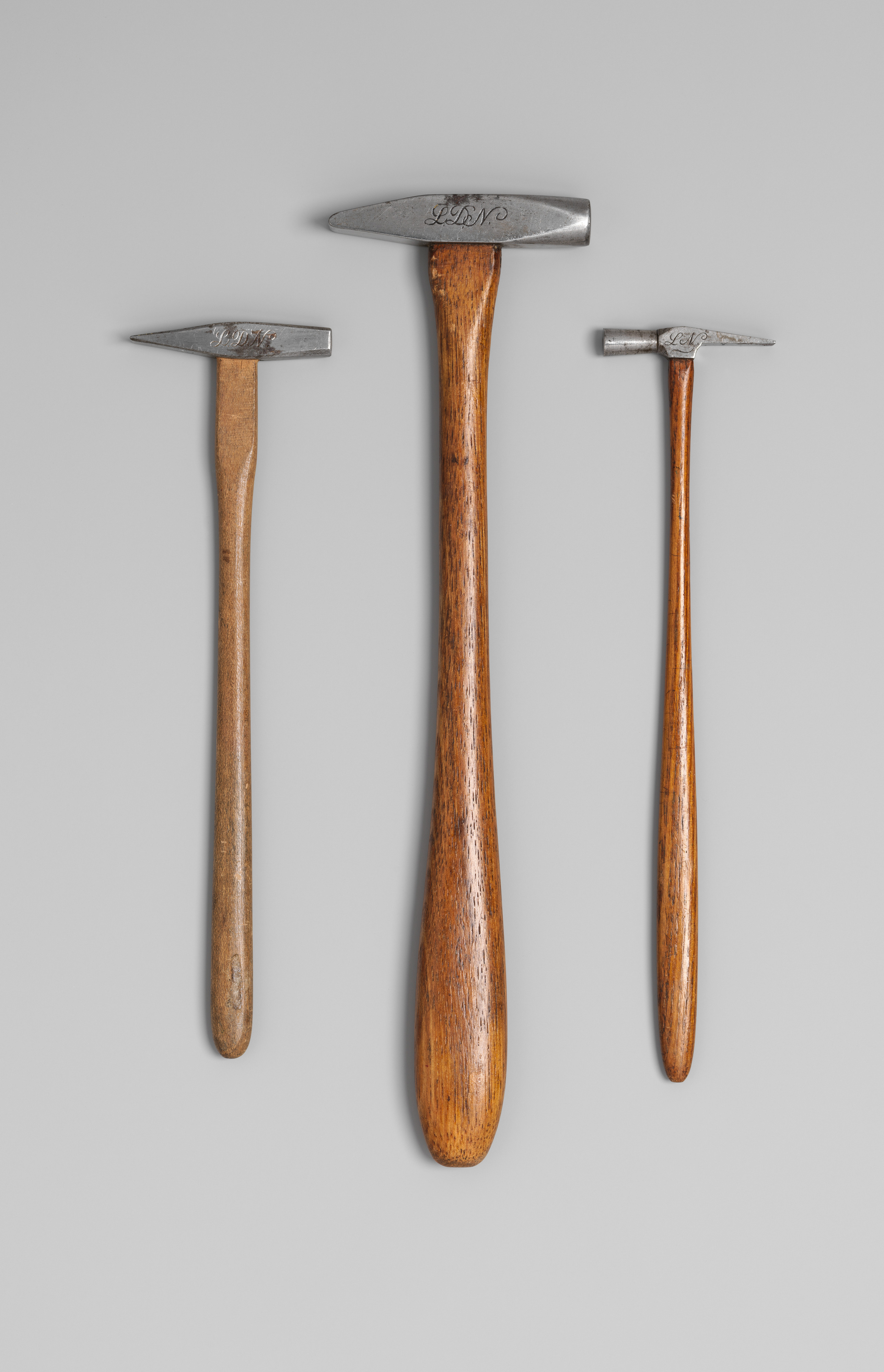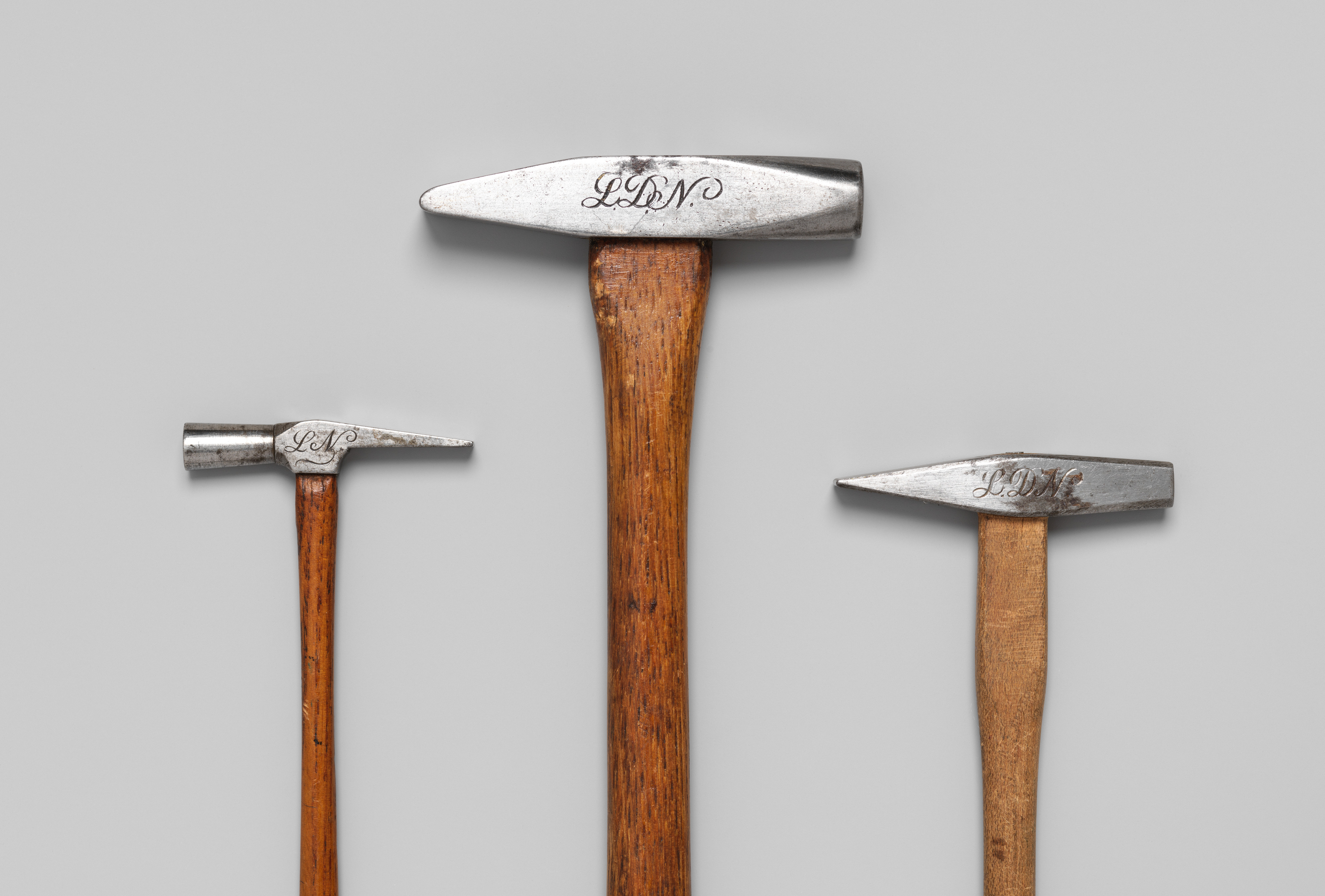Set of Sixty-Two Engraving Tools of Louis D. Nimschke (1832–1904)
Engraver Louis Daniel Nimschke American
Not on view
This set of engraving tools belonged to Louis Daniel Nimschke, the renowned German-American engraver who specialized in the decoration of firearms. Nimschke undoubtedly used these tools to create most if not all of the engraved designs in his workbook (acc. no. 2018.856.19), which he compiled as a record of his own work and other artists’ designs that inspired him. Together, the tools and workbook offer an invaluable and unique window into the creative and technical processes of one of the most talented engravers of the nineteenth century.
The set comprises sixty-two specialized tools including hammers, planishers, files, gravers, punches, and calipers, some stamped with manufacturers names. Several Nimschke inscribed with his initials and a date.
As the production of firearms became increasingly industrialized in the United States in the 1850s, customers seeking to personalize their machine-made guns turned to independent engravers like Nimschke to add original embellishment. Nimschke was preeminent among this new class of artisan, earning fame as a firearms engraver before major American arms manufacturers like Winchester and Colt began to offer organized, cost-effective factory embellishment options for their customers. He immigrated to the United States from Germany (via Liverpool) in 1853 and spent almost his entire adult life in New York City. Over the course of his career from around 1850 through around 1900 he embellished hundreds of firearms by dozens of arms makers including Colt, Winchester, Smith & Wesson, Remington, Marlin, New Haven Arms Co., Marston, Reid, Moore, Whitney, Spencer, Freund, D. Fish, A. G. Genez, and others.
Nimschke trained at the Industrial School in Zella, Thuringia, Germany, where he studied under the master, Ernst Moritz. There he also trained under Gustav Ernst, a preeminent instructor responsible for the development of a number of Germany’s most distinguished industrial artists who, like Nimschke, would go on to settle in the U.S. in the late 1840s–50s and create what later became known as the "American" style of firearms engraving. The famous firearms engraver Gustave Young (1827–1895), for example, was also a pupil of Ernst. Nimschke’s personal copy of Ernst’s influential 1850 pattern book, Musterblätter enthaltend die anwendbarsten Jagdstücke u. Arabesken für Büchsenschäfter, Graveure etc., which perhaps more than any other printed source informed the engraving styles of these northern European immigrants, is also preserved in the collection of the Arms and Armor Department (acc. no. 2002.233.1a–j).
Due to rights restrictions, this image cannot be enlarged, viewed at full screen, or downloaded.
This artwork is meant to be viewed from right to left. Scroll left to view more.
